A Research Paper Outline is a simple plan of action used to organize research information logically, enabling the writer to tackle writing one section at a time.
The research paper outline assists the writer with keeping away from stocking in the creative cycle. It also helps writers compile their points ensuring that nothing is left out.
7 Best Examples
When embarking on the journey of writing a research paper, having a well-structured outline can significantly enhance your efficiency and clarity. Examples of research paper outlines serve as invaluable tools in guiding your writing process. By exploring these examples, you gain access to a variety of templates and frameworks that can help you organize your ideas, define your research objectives, and establish a logical flow for your paper.
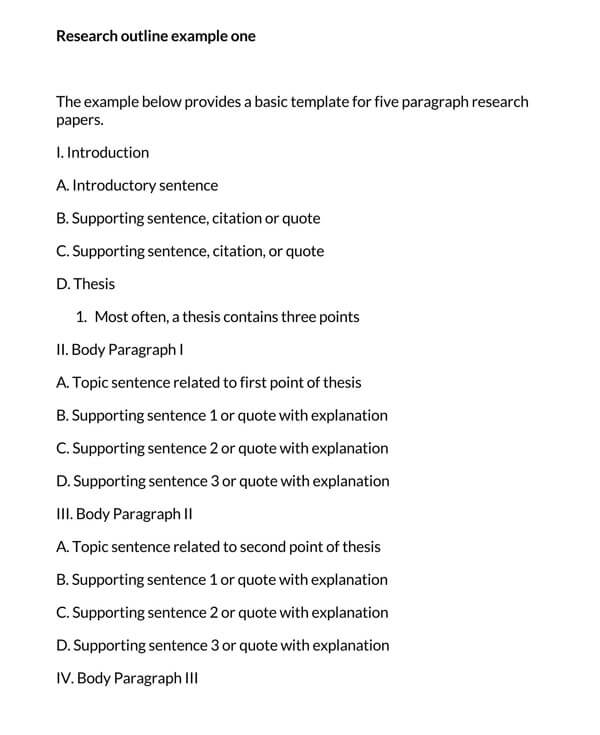
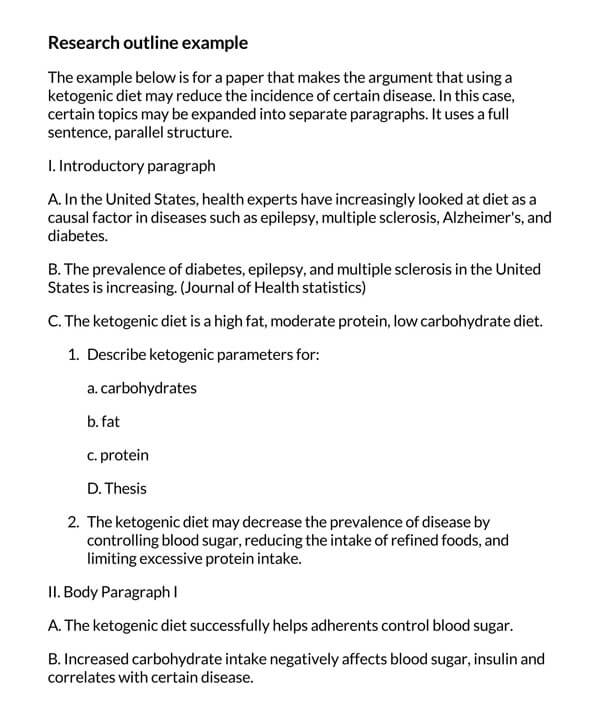
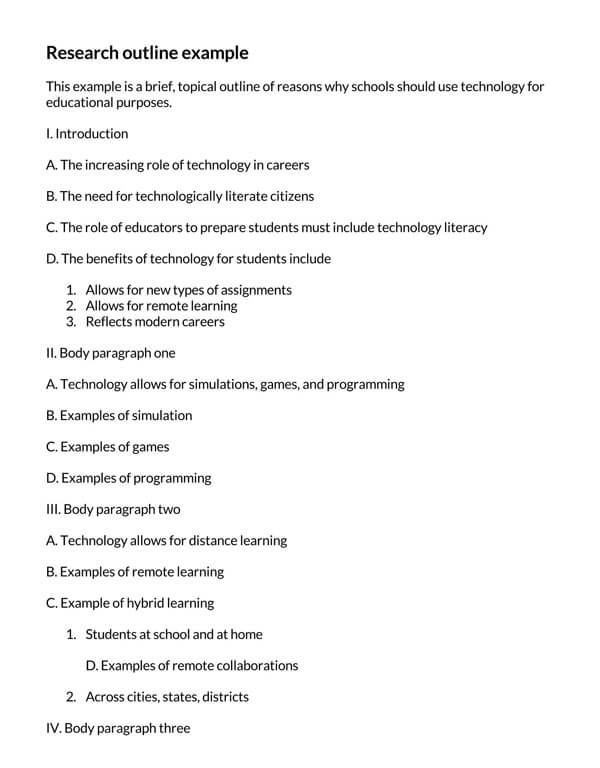
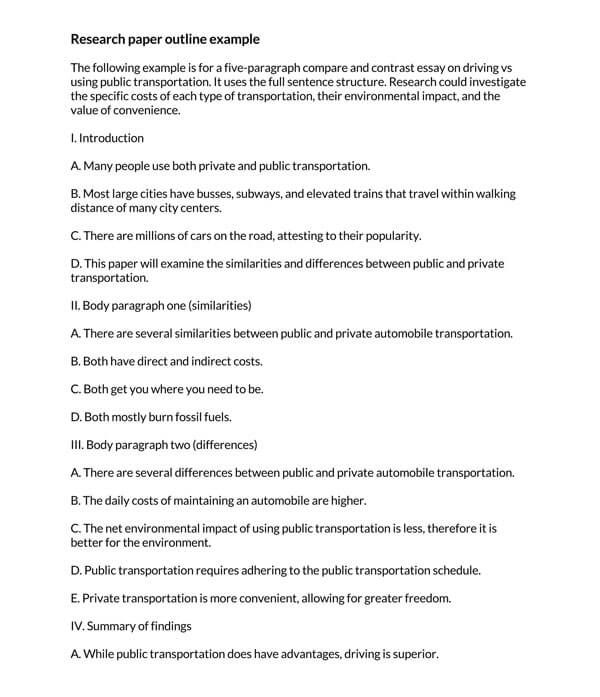
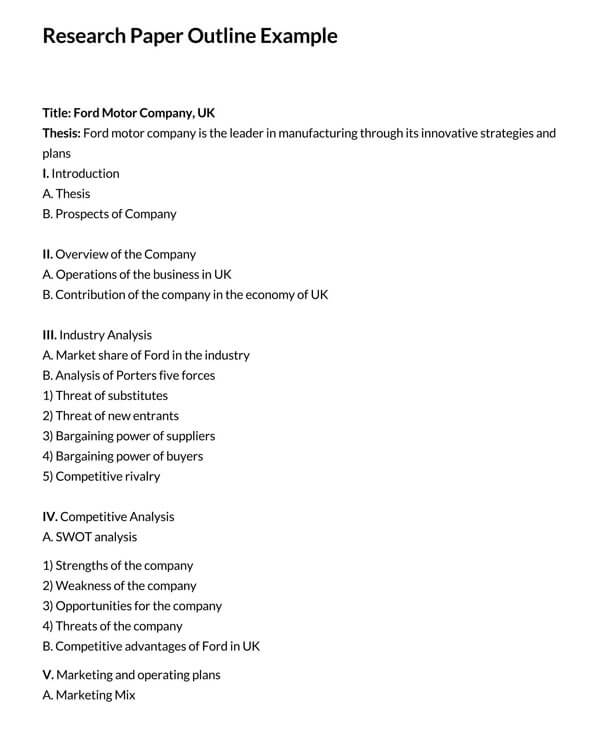
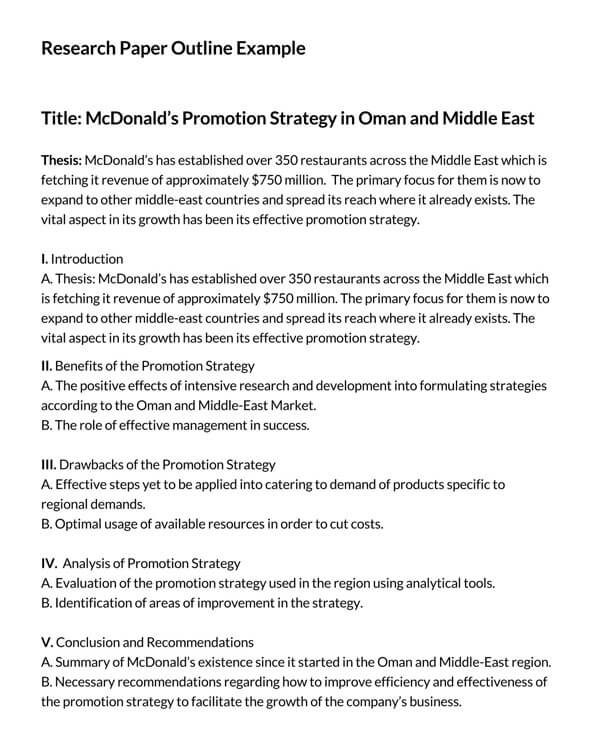

Research Paper Outline VS. Table of Contents
The table of content and the research paper outline are alike in many ways; however, an outline is a form of a summary that organizes the main ideas of the paper in a hierarchical or logical order of information while a table of content provides a more detailed structure of the paper by requiring the writer to specify the page numbers along with the chapters and sub-chapters.
Outlining a research paper enables writers to keep track of the large amounts of information in the pages. Writers can also organize their thoughts and information into a logical order that ensures good content flow. Outlining enables the writer to break down the information into the topic sentence, thesis, supporting sentences, citations, and relevant quotes for the research paper. Good quality outlining also guarantees that all the information is captured to ensure that the writer can understand how each element fits into the topic.
A Detailed Research Paper Outline Includes the Following
An outline helps writers structure their information. It also ensures clarity in its delivery, making it important for the writer to provide a detailed outline. A detailed outline has several parts, and each plays a significant role in ensuring efficient communication.
A writer must therefore be aware of the following parts of it:
Cover/title page
First, a student should ensure that the outline has a title/cover page that indicates what the paper is about. It should also contain the writer’s full name, the professor’s name, participants involved in the investigation (if any), and the submission date. Therefore, the cover page ensures that general information about the outline is provided and allows the reader to identify the research topic at first glance. The title page also helps the writer’s work seem more professional.
Abstract
Secondly, the outline should include a summary of the topic of study, the basic findings of the research, and the significance of the research or the entire thesis. The abstract should not exceed 250-300 words. A brief conclusion should also be included to ensure that the abstract is fully self-contained and makes sense on its own without further reference.
A well-written abstract should ensure that readers get the essence of the paper to enable them to decide if they should read the rest of the outline. It also informs readers of the critical points of the outline.
Introduction
Thirdly, the introduction of the outline should state the topic under investigation and explain why it is worth studying. Writers should also state what they hope to prove their thesis. The introduction, therefore, contains an overview of the topic and the thesis statement.
Methodology
Next, the methodology section of the outline should state how the writer performed the study. Stating the methodology in the outline enables the reader to judge the validity of the methods used by the writer. It also helps portray the writer’s reasoning by indicating the techniques, tools, and methods employed in the study context.
Results/discussion
Writers should then ensure that the outline contains their findings and an interpretation of the results. The outline should break down the data to enable the writer to state the significance of the findings. Combining the results and discussion section helps ensure that readers are not frustrated with findings they may not understand.
Conclusion
Finally, the writer should conclude the outline by summarizing the results, reiterating the hypothesis statement(thesis), stating the research paper’s value, suggesting ways to implement the findings, stating some forecasts, and indicating references of the information. This ensures the reader is reminded of the strengths of the main argument.
Research Paper Outline Formats
Students or writers intending on writing an outline must first be aware of what style guides they can use. Familiarity with the formats of an outline enables the writer to convey the main points in the paper effectively.
The following are the two styles used in different fields of a research paper outline:
1. Modern language acquisition
A Modern language acquisition (MLA) is a style of writing that uses parenthetical citation to cite sources. Source citation consists of full references at the end of the paper. The reference citation signals to the reader that the information has been obtained from a separate source.
To which fields is MLA applicable?
An MLA is mainly used in the fields of comparative literary analysis, cultural studies, history & anthropology, English composition, literature, foreign language & literature, and literary criticism. This is due to its consistency throughout the document. However, it also provides frameworks for brevity and clarity, making it suitable for these fields.
2. American psychological association
An American psychological association (APA) style of writing uses an author-date citation system. This format is composed of the author’s last name and year of publication. Although it directs readers to the reference list at the end of the paper, a source material page should also be provided.
To which fields is APA applicable?
An APA style guide is used in the fields of psychology, social sciences, humanities, health care and nursing, and education. It provides an outline with clarity, making the paper easier to read and comprehend. It also ensures uniformity when sources are cited the same way, therefore, ensuring a better flow and focus on the contents within it.
Things to Remember Before Starting
A good outline enables writers to organize their information in a coherent order, enabling them to develop a strategy to tackle the topics. Lengthy assignments should be outlined to ensure writers adequately cover their topics, subtopics, and supporting details. The introduction, body, and conclusion of an outline should be well supported by the type of writing format chosen by the writer. Writers should also consider reading examples of outlines covering similar topics before writing their outline for improved work quality.
Writing a Research Paper Outline
For writers to create an effective research paper outline, they must ensure to follow the appropriate procedure.
The following is the procedure on how to write a research paper outline:
- Select a topic, that will be the main focus.: The topic selected should be interesting to the writer, and it should appeal to the reader. Writers can write down the ideas of their topics to help them make an appropriate selection.
- The writer must then formulate a research question from the topic selected: The research question will enable the writer to focus on a specific scope and time frame.
- Gather information concerning the topic: The writer must conduct extensive research to ensure that he/she has enough relevant information for the research paper.
- Formulate a thesis statement if it hasn’t been provided already: The thesis statement is what the writer claims about the topic that will be proven throughout the research paper. The writer should ensure that the thesis statement is placed at the beginning of the research paper outline.
- The writer must list major introductory points that support the thesis: The major points should be relevant to the topic and the thesis statement. The writer can label the points using Roman numbers, bullets etc.
- The subtopics should also be written: The writer should write a brief and clear statement for each sub-topic.
- Supporting arguments for the sub-topics should also be made: The writer can either arrange the supporting arguments in alphanumeric, decimal or complete sentence formats. This enables writers to organize the information logically to ensure the appropriate flow of the research paper outline. The writer can write full sentences for each supporting argument. He/she can subdivide each supporting argument till the outline fully develops. This ensures that the writer has formulated a detailed and cohesive outline.
- The writer should then write a comprehensive literature review: The writer must conduct literature research on the background of the topic to help him/her determine what is already known about the topic and its supporting arguments. This should be included in the research paper outline.
- A brief outline of the research methods used should also be written in the research paper outline: This should consist of the various methods used to prepare information for the paper.
- The writer should then outline the results/discussion and analysis of the research paper: This enables the writer to organize his/her findings and interpretation of those findings.
- Finally, the writer should write a summarized conclusion: This ensures that the writer can tie everything outlined together and touch on the main points of the research.
Make Use of a Research Paper Outline Examples
Reviewing an outline example before creating an outline can help the writer better understand summarizing the points. Research outline examples can also help writers identify writing style formats applicable to the specific field. In addition, it can provide writers with demonstrations about their formulation of an outline structure. Writers are also able to use research paper outlines as templates to simplify the process and increase efficiency.
Frequently Asked Questions
To write the outline for a research paper, writers must first write a thesis statement and list major points supporting the statement. Writers should then list supporting arguments for each central point. Finally, the writer can continue to subdivide each supportive point till the outline is fully developed.
An outline example is a demonstration of logically organized and summarized information. An outline example enables the writer to identify the writing style, structure, and topic flow. It also enables writers to link their writing knowledge with a sample that can help them develop their outline.
A research outline should be no more than a few pages. However, there is no specific number of pages for every research outline because the length depends on the amount of information covered in the research paper.
To ensure that a research paper adequately covers the topic of study and makes a compelling argument, it must contain ten common parts, which include the title page, abstract, table of content, introduction, body paragraphs which include research description and method, findings, discussions, conclusion, biography/reference list, and index.










